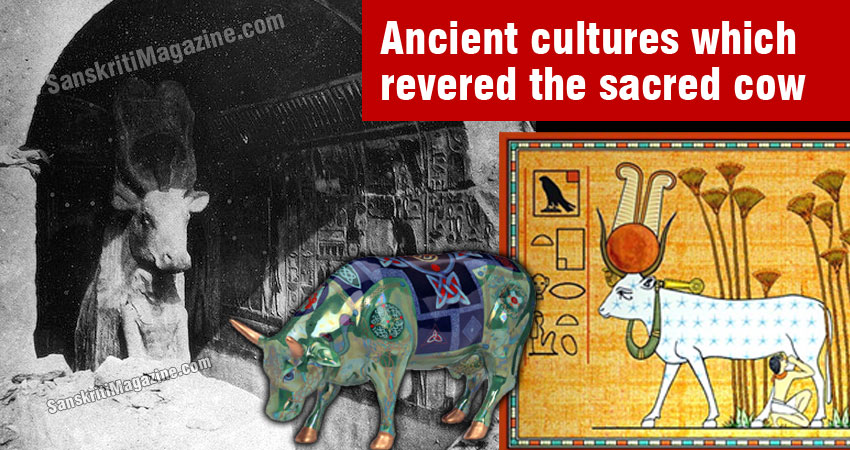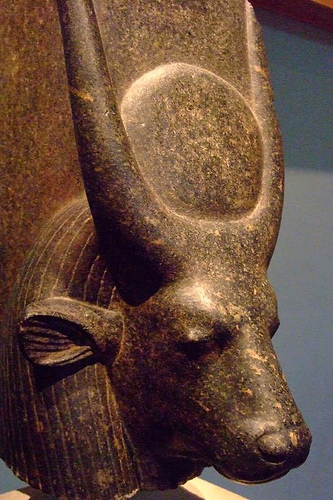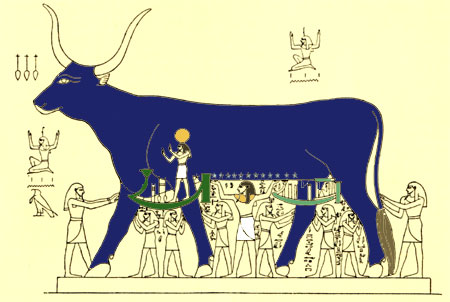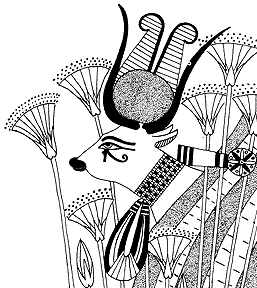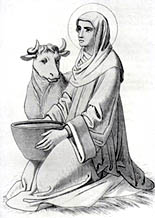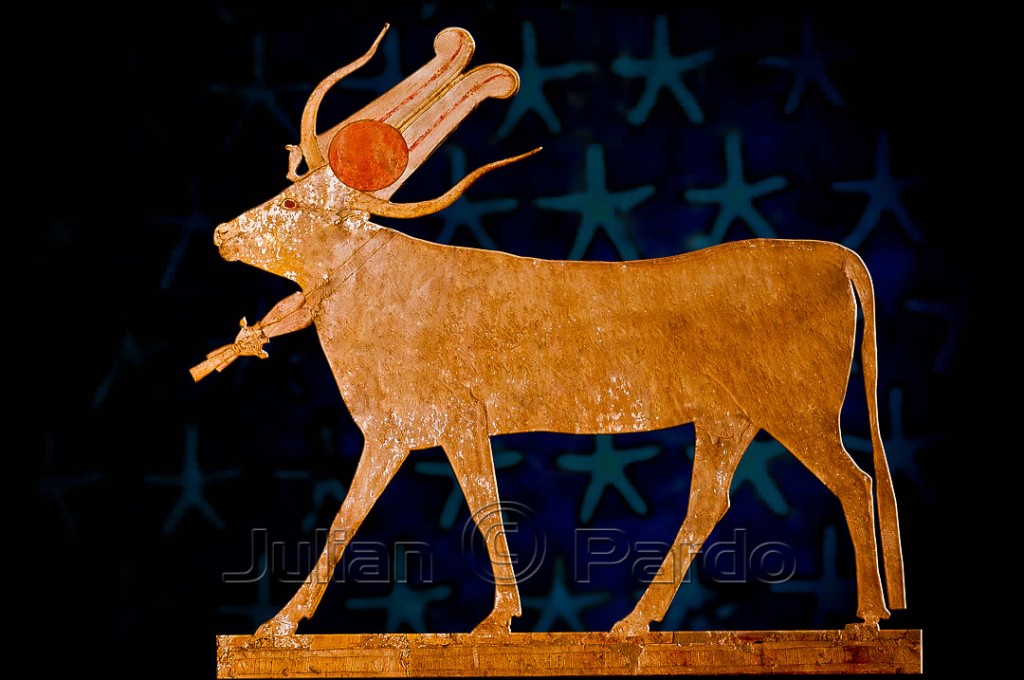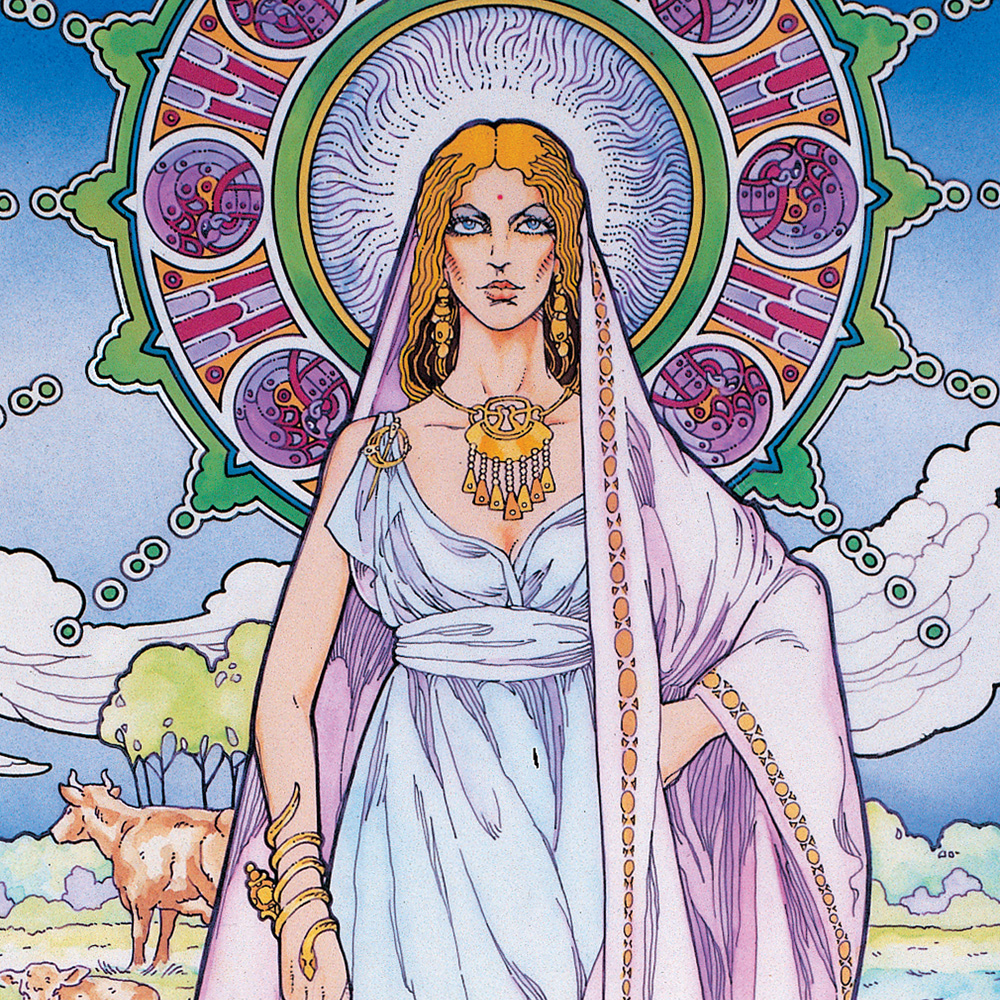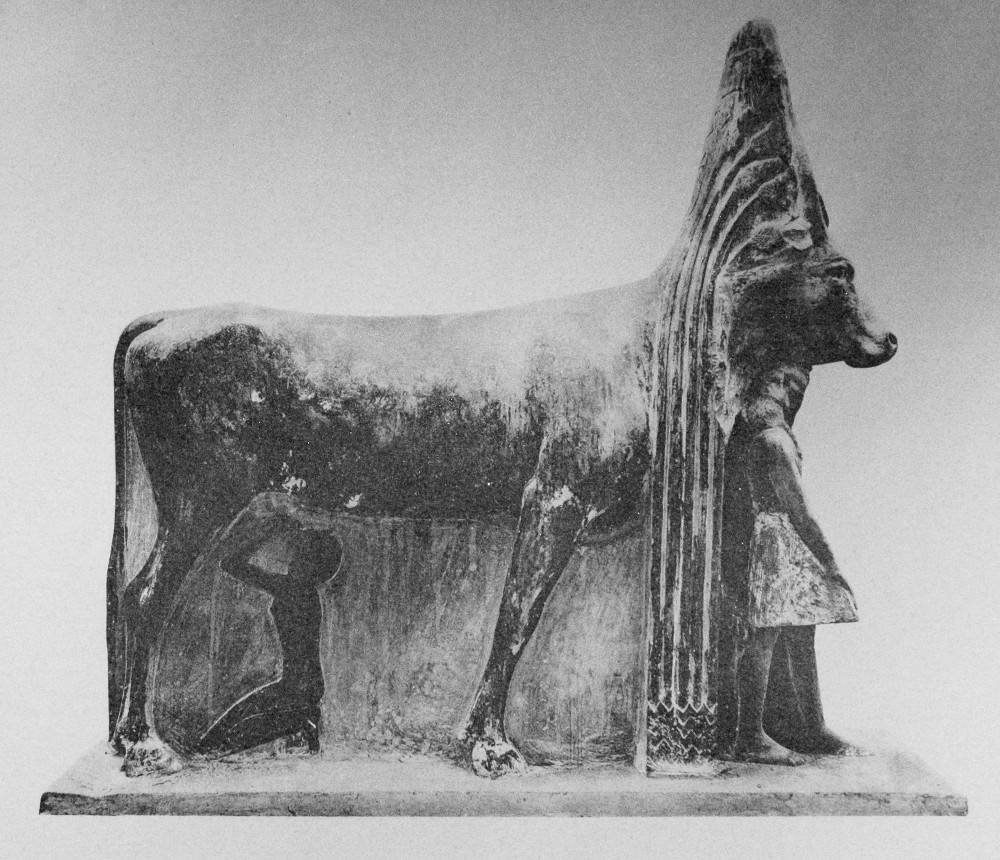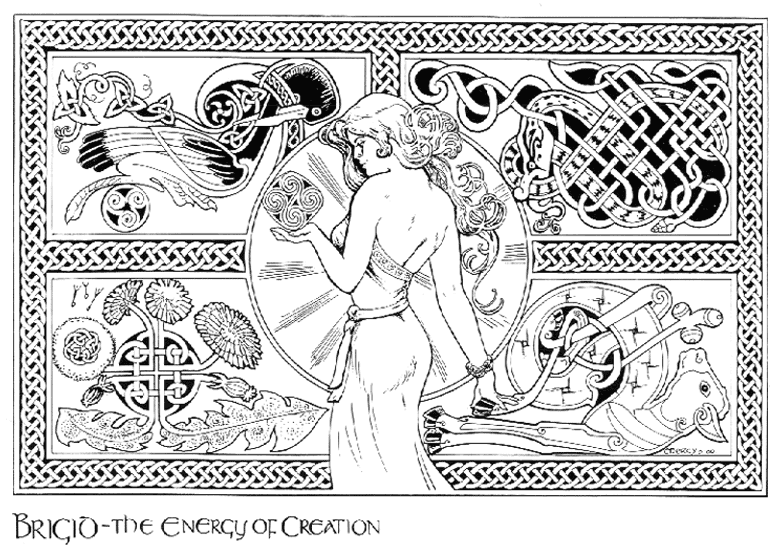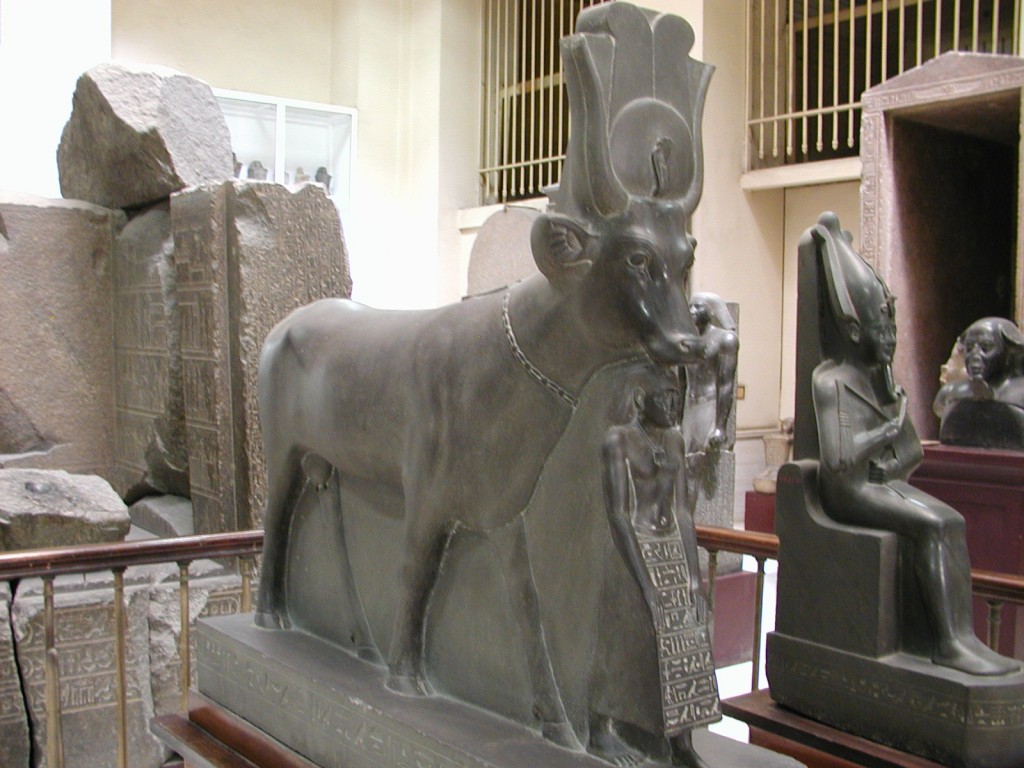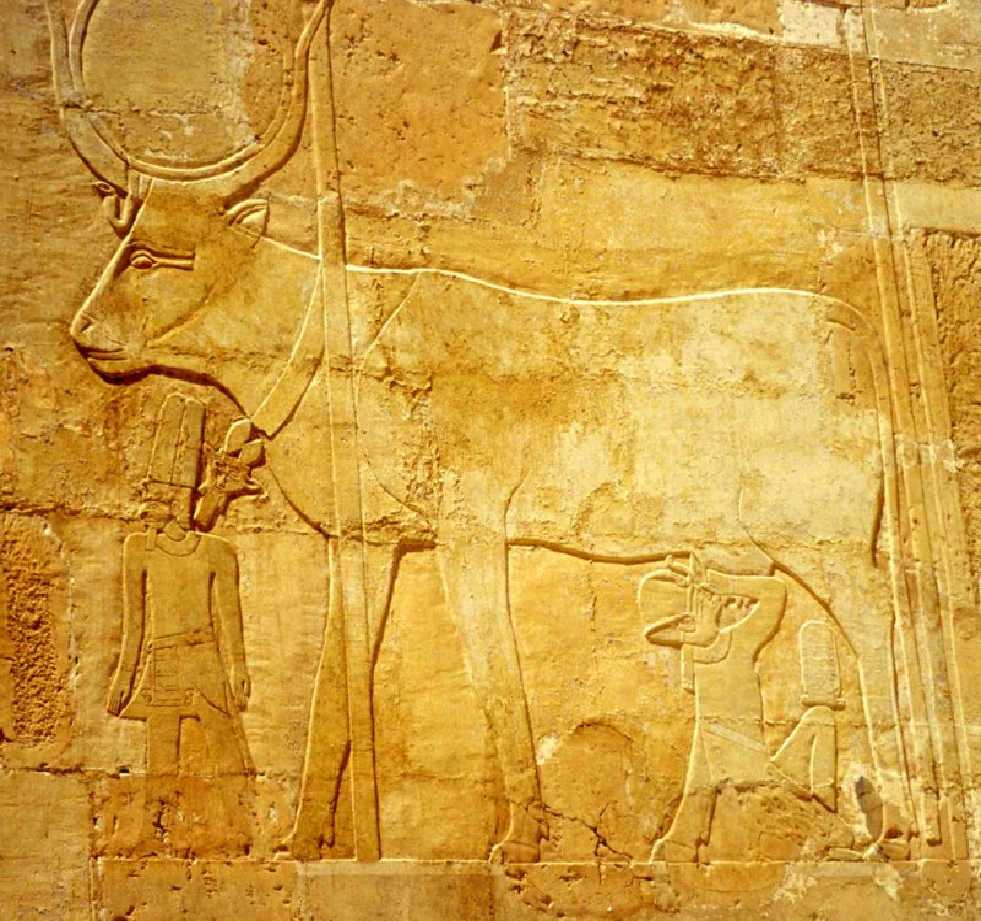Ancient peoples linked cattle, fertility and abundance. This was reflected in their spiritual practices, and in many parts of the world people worshipped a Cow Goddess or a goddess who protected cows.
Hathor, the Egyptian Goddess, was known as the gentle cow of heaven. She was said to give a plentiful supply of milk to the baby Pharaoh thus making him into a divine being. She was depicted as the winged cow of creation who gave birth to the universe.
She is shown with a cow’s head or with horns on her head between which there was a sun disk. She embodied the Milky Way upon which the Sun God Ra and the king sailed. She was a fertility goddess and was also associated with the flooding of the life-giving waters of the Nile and the breaking of waters before birth. She later became identified with Bata, another cow goddess, who was connected with Ba, an aspect of the soul and came to be associated with the afterlife greeting the dead as they began their journey from the world of the living.
In Ireland there were several ancient cow goddesses, some like Dil and Damona, who both ruled over fertility, but about whom little is known today.
Then there is Bo Find, who manifested as a white cow. She transformed Ireland from a barren land into a green and fertile one. She came from the Western Sea with her sisters Bo Ruadh, the red cow goddess and the black cow goddess, Bo Dhu. Their different colours represented the different phases of the moon.
The sisters all went to different parts of the island. Bo Find went to the centre where she gave birth to a male and female calf. These twins were to provide food for the people by giving milk and ploughing the earth. Their work done, the cow sisters then departed back to the sea.
Another goddess was Anu who was a guardian of cattle and health. Fires were lit for her in midsummer and her priestesses sang the dying to sleep.
Brigit was a Celtic mother goddess to many European tribes. Some suggest her name came from the Sanskrit word brihati, an epithet of the divine. She was a goddess of regeneration and abundance and her protection was said to be very great. She was seen with a pair of oxen called Fea and Feimhean.
As Christianity began to grow Brigit, also known as Bride, was transformed into a popular saint. Legend says her mother was carrying a pitcher of milk when she was born and the infant was bathed in it. She was unable to eat ordinary food and was reared on the milk of a white, red-eared cow. This was a special animal with links to the otherworld in Celtic mythology. The companion animal of the adult saint was said to be a cow, who gave her all the milk she required.
When she became an abbess she miraculously increased the milk and butter yield of the abbey. Some say there was a lake of milk three times a day and one churning filled hundreds of baskets with butter. After her death her skull was stolen from the abbey by soldiers who took it to Portugal and every year cattle were driven past it in a spring festival.
Today, in the Western part of the world the great cow goddesses of the past have faded into history. The cow is rarely venerated now and her gifts together with those of the bull and the oxen are plundered, like those of mother earth, without recompense. They are seen solely in economic terms as objects for exploitation and nothing is given back. Indeed they are killed when they have outlived their usefulness.
It would serve us well to remember that domesticated cattle were the foundation of human civilisation. The way we treat them may symbolize much about how corrupted our relationship with nature has become. When we respect the cow and enter into a symbiotic relationship with her, we are respecting the entire natural world and celebrating abundance.
~ The Ahimsa Dairy Foundation, a not-for-profit company set up to provide entirely slaughter-free milk in UK

